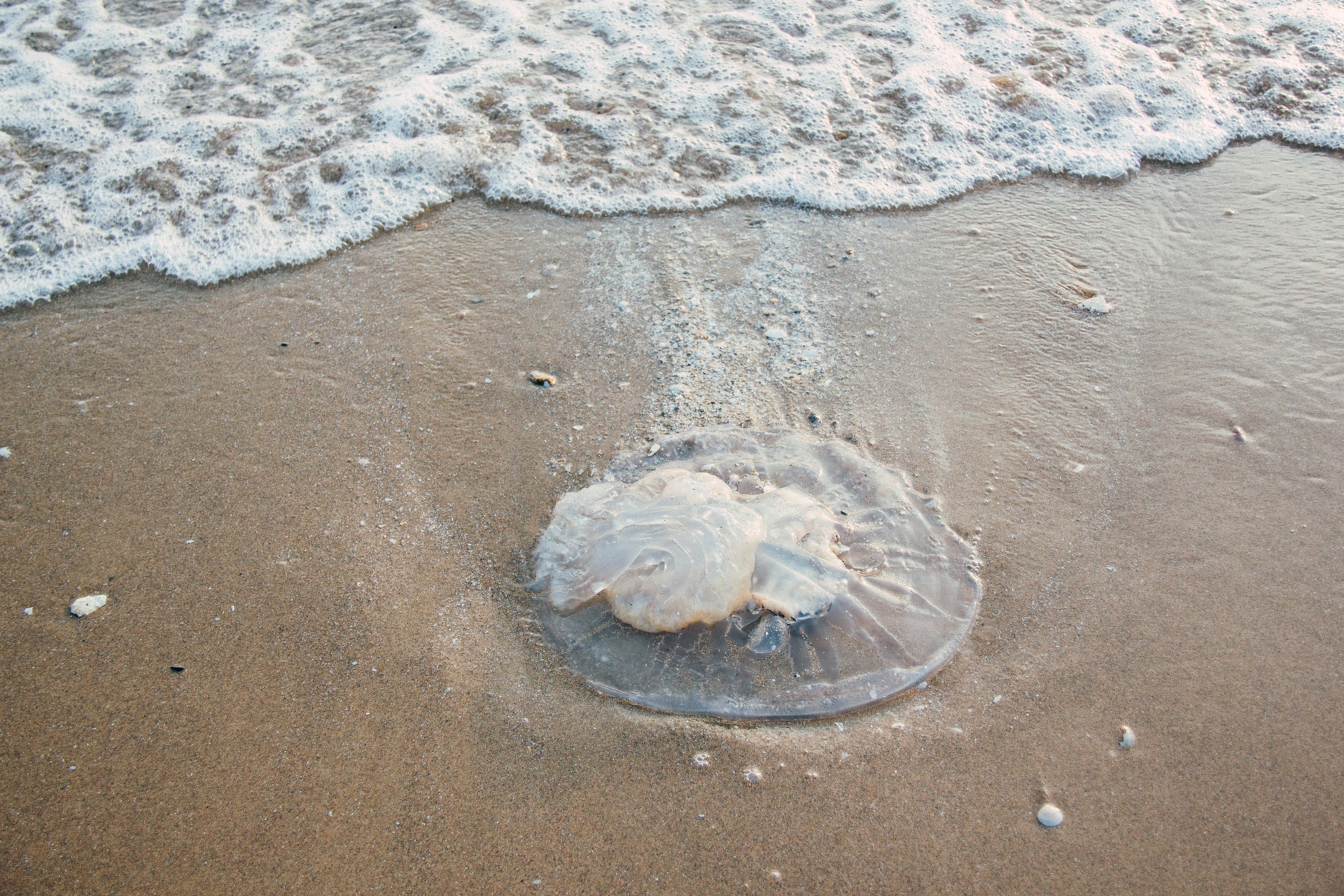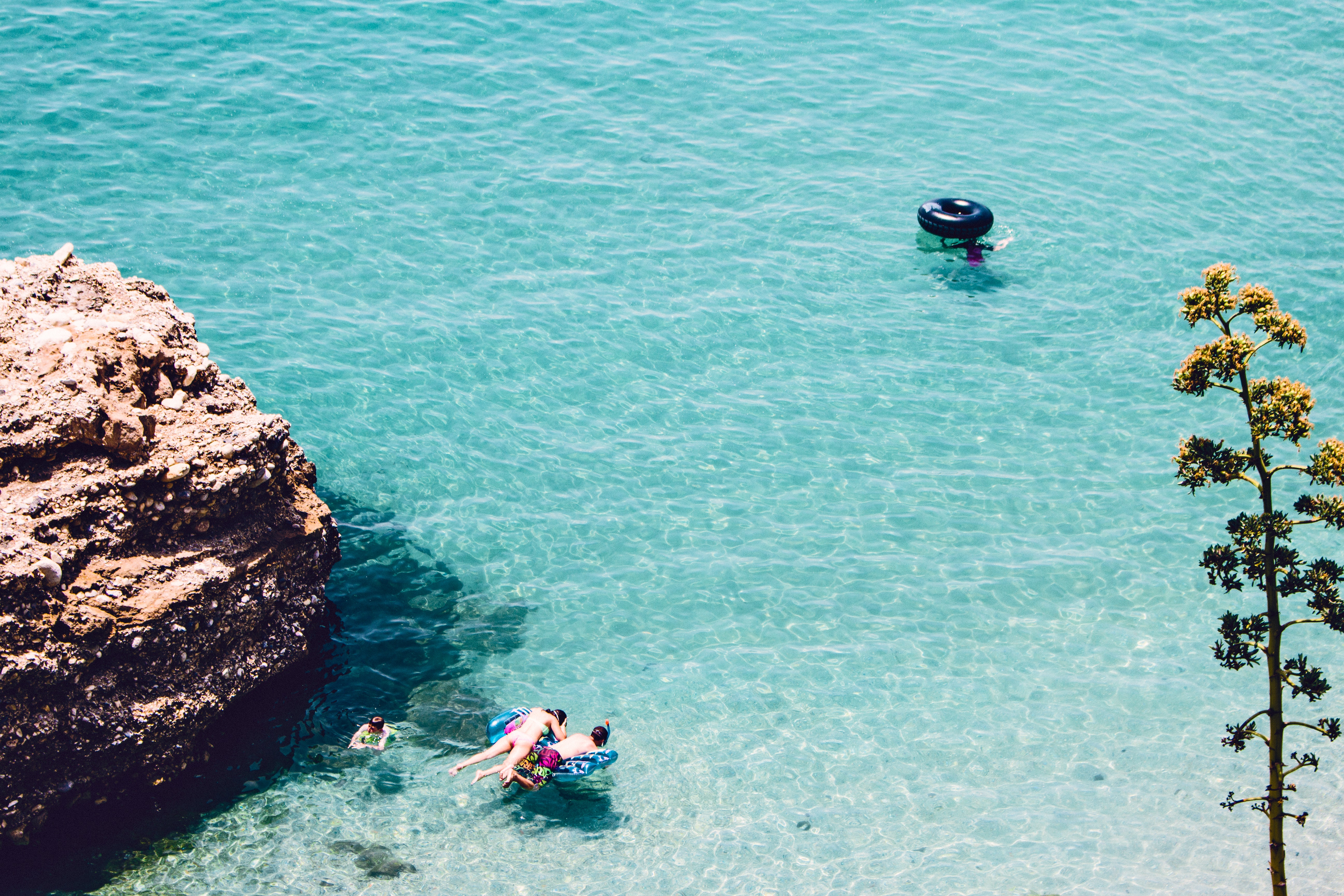Here comes the sun, and what better way to bask in the sunlight than spending the day on the beach. But you need to get out and travel further south to experience paradise in Asia — in Sanya (Hainan Province), Bali (Indonesia), Palawan (Philippines), or Phuket (Thailand).
Have you packed your swimming essentials and prepared your first aid kits yet? When you get ready for your beach adventure, one important and life-saving thing that you need to know is how to handle beach emergencies. That’s our topic in this edition of Doctor’s Corner, with Dr. Reinhard Krippner, a family medicine physician at United Family Liangma Clinic.
What are the usual emergencies that happen on the beach?
Dr. Krippner: The most common emergencies are probably due to prolonged and intensive exposure to the sun, injuries on the beach or in the water and contact with some sort of sea creature. Drowning accidents, which may not be noticed immediately when happening, are the most devastating emergencies. We’ll talk about that later.
Let’s talk first about sunbathing. What are the risks of staying too much under the sun?
Dr. Krippner: It is surprising how many people (rarely Asians) still love to sunbathe with all the knowledge about UV light damage to the skin leading to accelerated skin aging, precancerous skin lesions and finally to different types of less or more aggressive skin cancers.
On the beach, a sun lotion with a high UV light protection factor (30 or more) should be used. Even with a sunshade, there is still a lot of indirect sunlight reflected from the water surface.
Severe sunburns may be seen in people who underestimate the sun, fall asleep on the beach, are drunk, or go swimming without adequate sun protection for their back. Cold compresses, Calamine lotions or gels containing aloe may give some relief, while medications like ibuprofen may help against the pain and inflammation. Serious sunburns have to be treated in a hospital.
What are the other risks of sun exposure?
Dr. Krippner: A more serious effect of prolonged sun exposure is heat exhaustion, which is a combination of excessive heat exposure, lack of fluid (dehydration), and exertion. Dehydrating alcoholic drinks may also play a role. People with chronic illness are more at risk. Symptoms may be a headache, intense thirst, dizziness, excessive sweating, muscle cramps, vomiting, fast pulse and breathing, and body temperatures above 38°C.

Do heat exhaustion and heat stroke happen when someone is swimming in the sea or only on the beach?
Dr. Krippner: Even a water temperature of 29°C like in Southeast Asia is still 8 degrees below normal body temperature, therefore it cools the body. So heat exhaustion cannot happen while swimming.
How should a person dealing with heat exhaustion or heat stroke be managed?
Dr. Krippner: A person with the above-mentioned symptoms should be moved to a cool place, lie down with feet slightly elevated, and made to drink plenty of water or sports drinks. For cooling the body, water should be sprinkled on the skin and cold packs will also help. If the situation does not improve within 30 minutes or the patient is getting signs of heat stroke with a body temperature of 40°C, becomes confused or unresponsive, emergency services must be called immediately. Symptoms in children are similar, but they may become sleepy and their condition may worsen faster.
What about the other emergencies?
Dr. Krippner: Other common emergencies are skin injuries due to sharp objects, jellyfish stings, sea urchins, or corals.
Coral and sea urchin injuries, even without bacterial infection, may take sometimes weeks to heal because of tiny particles entering the skin causing foreign body or allergic reactions. After a skin injury, it is important to immediately clean the wound with water and disinfect the wound repeatedly for several days. Having a small bottle of disinfectant and a band-aid with you may save you from infection, which can become quite severe. Any deeper or more extensive wound should be seen by a doctor especially if you think it’s infected.

What are the other risks on the beach?
Dr. Krippner: On less populated beaches, tourists should tread cautiously to avoid well-camouflaged stingrays, scorpions, or stonefish. Their stings are extremely painful and may cause serious but rarely life-threatening envenomations. The most important first aid for stonefish stings is the immersion of the foot in hot water (below 45°C), which inactivates the toxin. In Australia, antivenom may be available. The best precaution is wearing plastic shoes.
Are leggings and rash guards effective against the sting of jellyfish?
Dr. Krippner: Jellyfish often appear seasonally, with some species being predominant on certain coasts. Their often invisible tentacles contain microscopically small capsules with a mechanism that, on contact, injects the toxin into the skin. Jellyfish stings are quite common, causing itchy or painful rashes. Sometimes they cause generalized allergic or toxic reactions and rarely life-threatening situations. Even if the reaction is not severe, some swimmers may panic.
Whatever type of clothing you wear, as long as the cloth is tightly woven (mesh size < 0.25 mm) it will protect you against stings. A wise precaution is to stay on the beach if you see people experiencing jellyfish stings.
What are the ways to manage the pain from jellyfish stings? It’s been said that urine can be used to treat jellyfish stings, but does it really work?
Dr. Krippner: It is known that washing jellyfish affected skin with tap water actually triggers more unopened capsules causing further exposure to the toxin. The same is true for alcohol and urine, whereas use of vinegar, which you may get from a nearby restaurant, seems to be beneficial in some types of jellyfish stings. Do not rub the skin but scrape off any possibly remaining tentacles with for example a bank card. This you may do by covering the skin with sand first, which some sources also consider as helpful.
Let’s talk about drowning, which is said to be a major beach emergency. What are the first aid techniques to help a victim of drowning?
Dr. Krippner: Drowning happens even to good swimmers, especially if basic rules are disregarded, i.e. swimming far out into the sea, overestimating one’s physical strength, or ignoring or underestimating currents. Going into the water, if one does not feel well or is under the influence of alcohol, is definitely a risk. If warning signs or advice of rescue personnel on the beach are always followed, fewer people would drown.
First aid for drowning victims essentially is not different from Basic Life Support (BLS) for any unresponsive person with possible respiratory and cardiac arrest. This means clearing the airway (A), assist breathing (B) and support blood circulation (C) by chest compressions. Recently BLS guidelines reversed the order to CAB, starting with chest compressions.
In drowning victims, the primary cause of the life-threatening situation is lack of oxygen (hypoxia). Therefore BLS still follows the old sequence, giving 5 initial rescue breaths (mouth to mouth or mouth to nose) before 30 chest compressions.
For more details, it is highly recommended to attend a BLS course, since you never know when you may need it, not only on the beach.
First Aid for Drowning Victims
This section is adapted from a first aid blog by the British Red Cross.
How you can help victims of drowning
If you pull someone from the water and they are unresponsive and not breathing, follow these steps:
1. Check for breathing. Tilt their head back and look, listen and feel for breaths. If they are not breathing move on to the following steps.
2. Tell someone to call the local coast guard, hospital, or other emergency services for immediate help.
3. Give five rescue breaths: tilt their head back, sealing your mouth over their mouth. Pinch their nose and blow into their mouth. Repeat this five times.
4. Give 30 chest compressions. Push firmly in the middle of their chest and then release. Repeat this 30 times.
5. Give two rescue breaths, then continue with cycles of 30 chest compressions and two rescue breaths until help arrives.
Drowning: eight warning signs
According to water safety expert Frank Pia, there’s another complication for younger people in the water: “The drowning movements of a young child can actually look like they’re doing the dog paddle.”
A child who’s drowning looks remarkably like a child larking about in the water. That’s why you need to know what to look for.
1. Head low in water, mouth at water level.
2. Head tilted back with open mouth.
3. Glassy eyes that are unable to focus, or closed eyes.
4. Not kicking with legs.
5. Hair covering the forehead or eyes for a prolonged period.
6. Gasping for breath or hyperventilating.
7. Inability to respond to the question: “Are you okay?”
8. Silence.
About the Doctor

Dr. Reinhard Krippner is a family medicine physician at United Family Liangma Clinic. Dr. Krippner completed his Medical Degree in 1978 after studying medicine in Germany. Dr. Krippner uses his expertise in Internal Medicine and Family Medicine to offer personalized care to his patients, adults and children alike. With his medical experience in Asia and Africa, Dr. Krippner is familiar with infectious and tropical diseases endemic in those regions. Having traveled on all five continents, Dr. Krippner draws on a wealth of knowledge in which to advise travelers on both health risks and their prevention. He has enjoyed hiking including many volcanoes in Indonesia, at high altitude (Mt. Kilimanjaro, Everest Base Camp), scuba diving in Southeast Asia and mountain biking in Africa. Dr. Krippner is board certified in Internal Medicine, Family Medicine, Tropical Medicine and Occupational Medicine. In addition, Dr. Krippner is certified to give advice and perform check-ups that follow German occupational health regulations for German companies overseas. Dr. Krippner speaks English, German, French, Spanish, Indonesian, and some Mandarin.
Photo: anna-m.weber, Porapak Apichodilok, Life Of Pix via Pexels; Walkerssk via Pixabay; courtesy of BJU
This post first appeared on beijingkids
